Frippery
Sharon Paulger - Solo Exhibition
Tension Fine Art, 135 Maple Rd, London SE20 8LP
On each side of the gallery, small prints, square and identical in size, are methodically arranged in a grid pattern. Each print appears both as a stand-alone as well as part of a single work wrapped around the walls of the gallery space.
Paulger’s intuitive and fluid use of strong, bright colours communicates a sense of spontaneity, fun and life. The gallery itself seems to be bursting, humming even with joyful energy. Hot, blinding and frivolous at first glance, the viewer is drawn in instantly.
With closer attention, it becomes clear that Paulger’s choice of colour, pattern and text is more than accidental. For example, the text in her work appears as incidental mutterings: half-whispered, overheard or not-quite-visible. Her unfinished phrases, like peripheral thoughts that can’t be fully grasped, lose us and guide us at the same time. It is hard to tell whether these are extremely deep, superficial, serious, or ironic. The effect of trying to read something ‘important’ too, orchestrates a slower approach to looking. I love this tactic - it effectively stops me in my tracks and demands greater effort. Unexpectedly, looking has become seeing and thinking. Meaning-making is inevitable.
Comparing and contrasting each single print is a natural and unsought response. I notice myself moving around the gallery, tilting my head and shifting my position to take in new views across the exhibition space. It quickly becomes evident that prints on one wall connect with others on other walls - there are partners and families of prints and the invisible connections between them fill the gallery space. I am swept along by this physicality and the joy of looking again and noticing more.
Paulger uses reclaimed materials without value and sustainable processes like silkscreen printing. Her exquisite choice of colour and carefully engineered, half-expressed messages, however, offer a stark contrast to the disposable card, paper and wood in her work. She reminds us of the preciousness of our resources in this way. Paulger’s work communicates a sense of futility and impermanence albeit reframed as joyful energy and life.
Sharon Paulger
https://sharonpaulger.wordpress.com
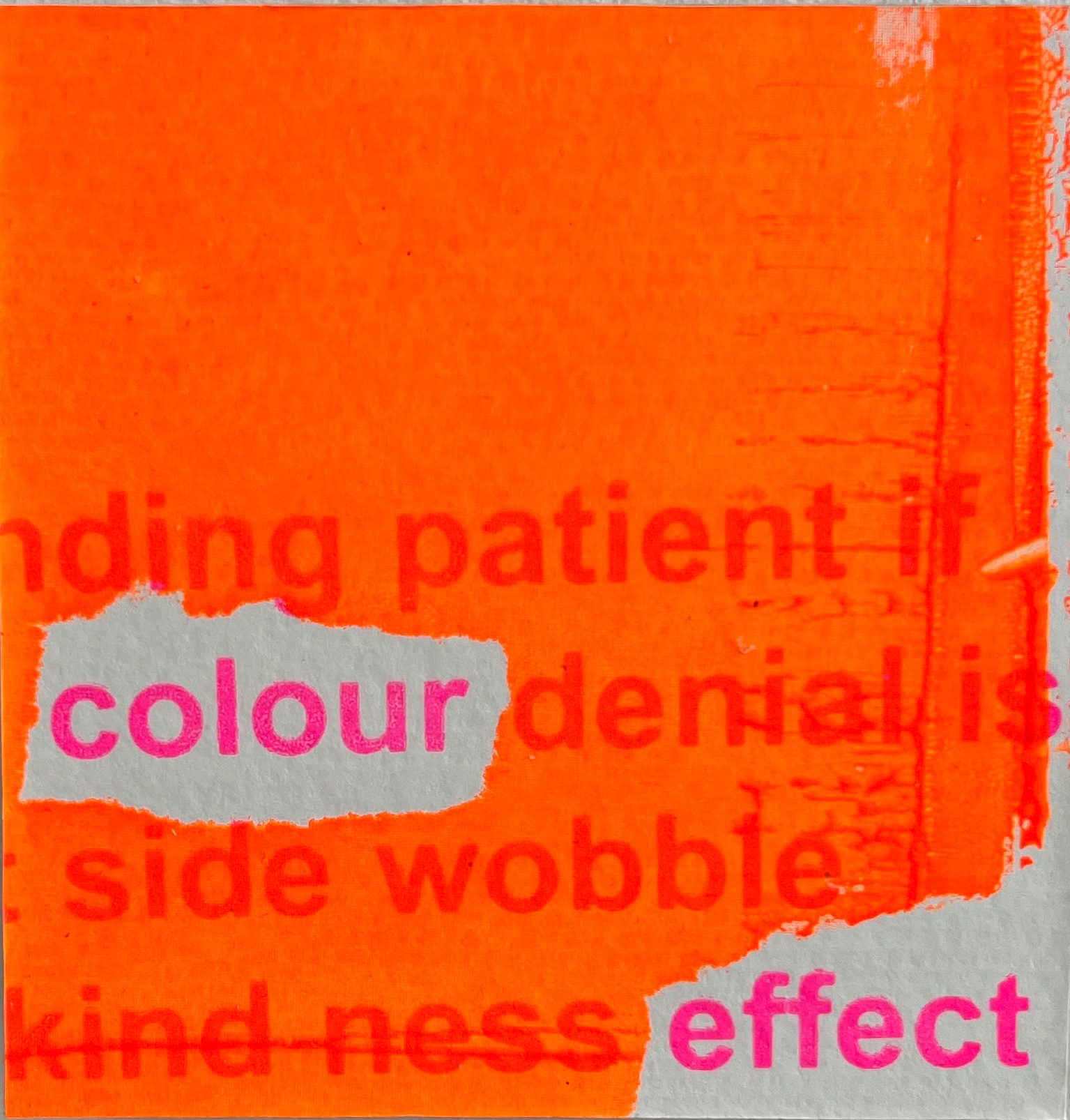
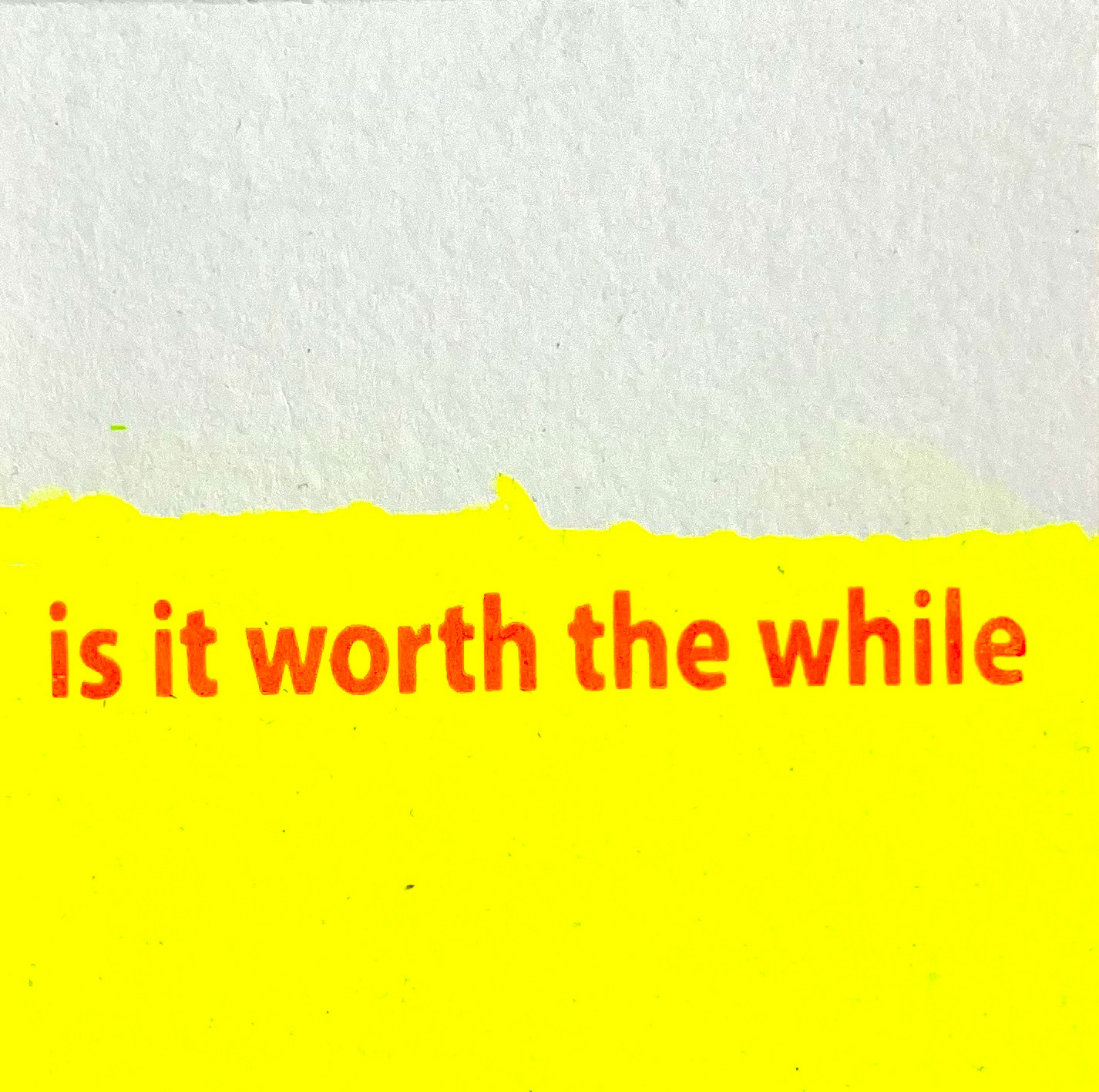
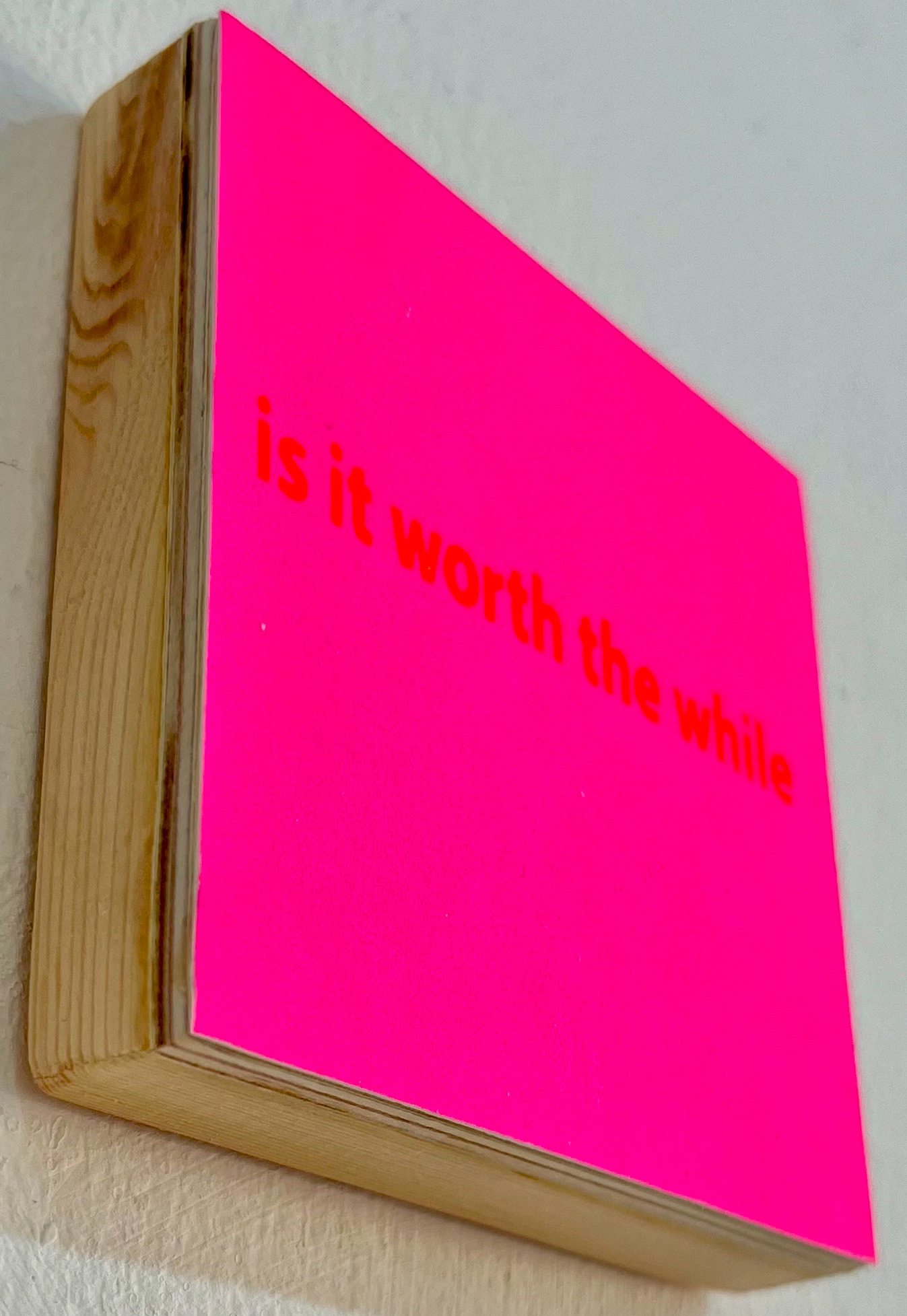

Tension Gallery Prize Graduate Show 2022
Sophia Cakova, Fiona Carruthers, Sorcha Jewell and Zhongge Sui
https://www.a-n.co.uk/reviews/the-tension-gallery-art-prize-graduate-show-2022/
Tension Fine Art, 135 Maple Rd, London SE20 8LP
The Tension Gallery Art Prize is awarded annually to four emerging artists selected from a shortlist of M.A. students graduating at Central Saint Martins, University of the Arts London. The selectors for 2022 were artist and director of Tension, Ken Turner and artist and Art Monthly magazine consultant, Matt Hale.
In this year’s show, Sophia Cakova, Fiona Carruthers, Sorcha Jewell and Zhongge Sui showcase a wide range of final project work including video, sound, installation, sculpture, photography and painting. Materials and subjects are manipulated fluently to share innovative, research-oriented and insightful work.
Approaching the gallery from the street, you are first of all surprised by a tantalising glimpse of Carruthers’ precariously balanced ephemeral willow rods marching across the gallery floor. Their uncanny presence in the hot, bright, urban sprawl of south London acts as an interruption, a signal and an invitation. In the gallery itself, works are arranged to generate a sense of movement and to reveal unexpected connections between the diverse works on show. First impressions are of dissimilar styles and themes, each telling distinct and separate stories. It quickly becomes apparent though that each artist has invited us to engage with the unseen, unsaid or the unknown of today’s world.
Cakova is a Slovak London-based interdisciplinary artist & physics researcher specialising in spectroscopy and sound. The dominant subject of her paintings in this show is Cakova’s coded language of visible light. Her lexicon of colour and pointillist style of mark-making is both striking and absorbing: these paintings seem to shimmer and vibrate with vitality, materiality, and the presence of sound. https://www.sophiacakova.com/
Carruthers is a UK-based artist exploring emergent scenarios of the human, nonhuman and posthuman. Her ‘on-the-point-of-collapse’ structures are engineered to rely on the interconnectedness of their constituent parts, their site and viewers’ amended behaviour, to exist and function. A resounding sense of mutual fragility, vulnerability and responsibility is experienced first-hand. The need to adapt is crucial. https://www.fcarruthers.art/
Jewell is a Welsh/Swedish artist based in London. Her multi-disciplinary work utilises anatomy, biochemistry, kink and distortion to communicate personal pain, neurodiversity and the implications of living with invisible chronic illnesses. Jewell’s use of personal images and a palette of red, black and white is both tender and violent, and, together with her highly visceral performance [video], the challenges of Jewell’s illness are unmistakable. https://www.sorchajewell.com/
Zhongge Sui is a London-based, multi-media artist, researcher, and 3D and jewellery designer. In Dreaming II, 2021, sound and moving image work effortlessly together to confront the audience with the uncertainty and tension of personal and collective social dilemmas. Sui’s unsettling mix of sound and disturbing behaviour in everyday social situations is both palpable and compelling. https://suizhongge.com/

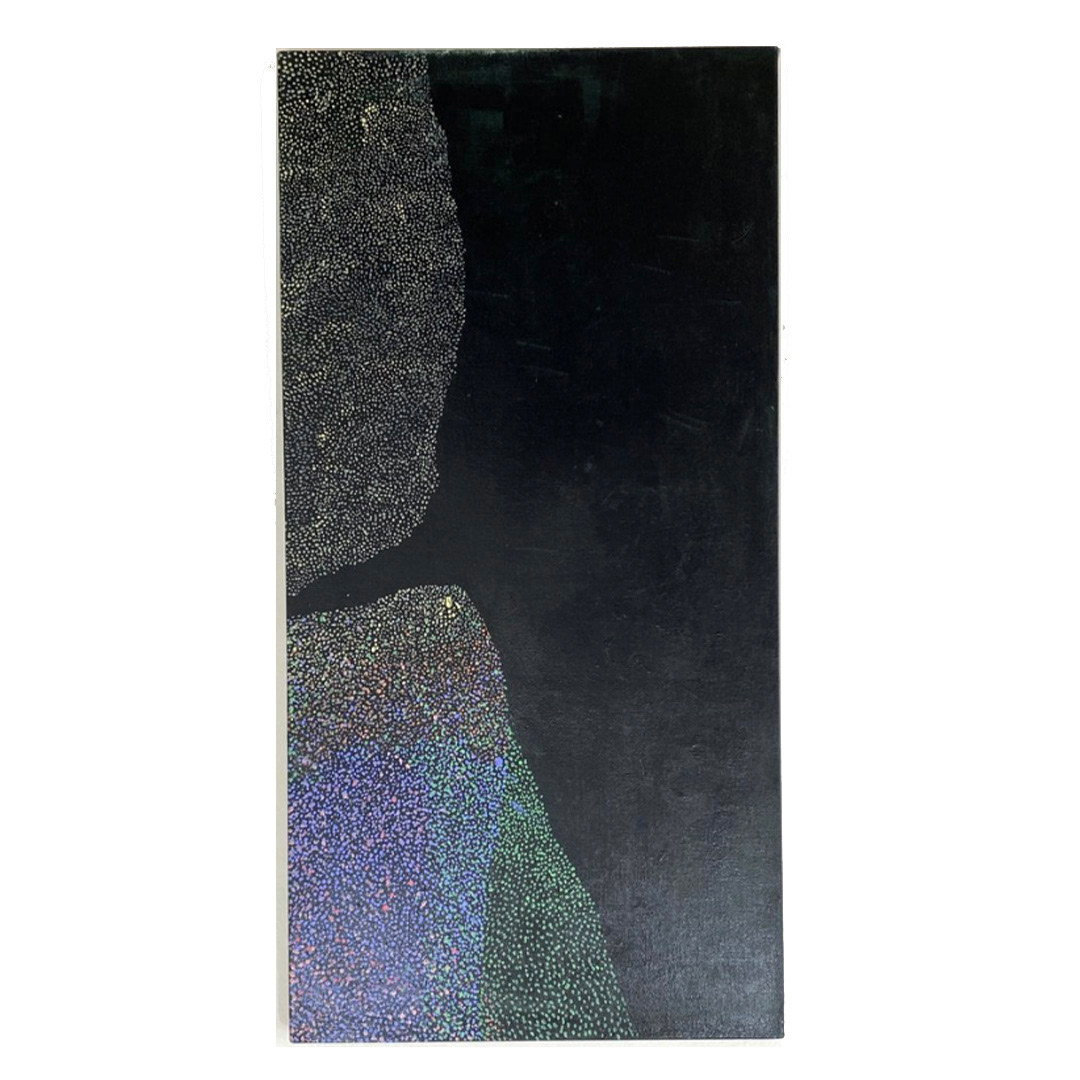
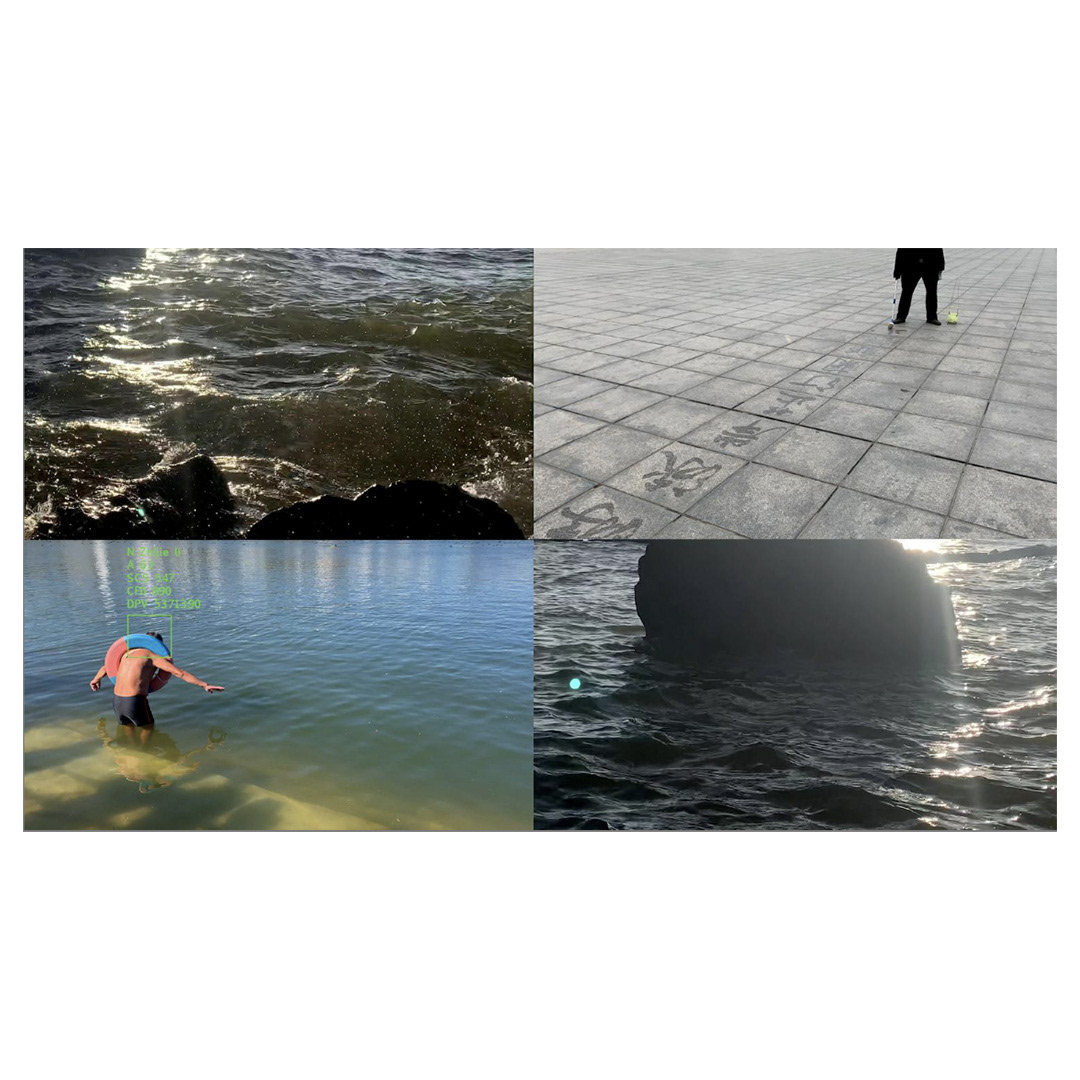
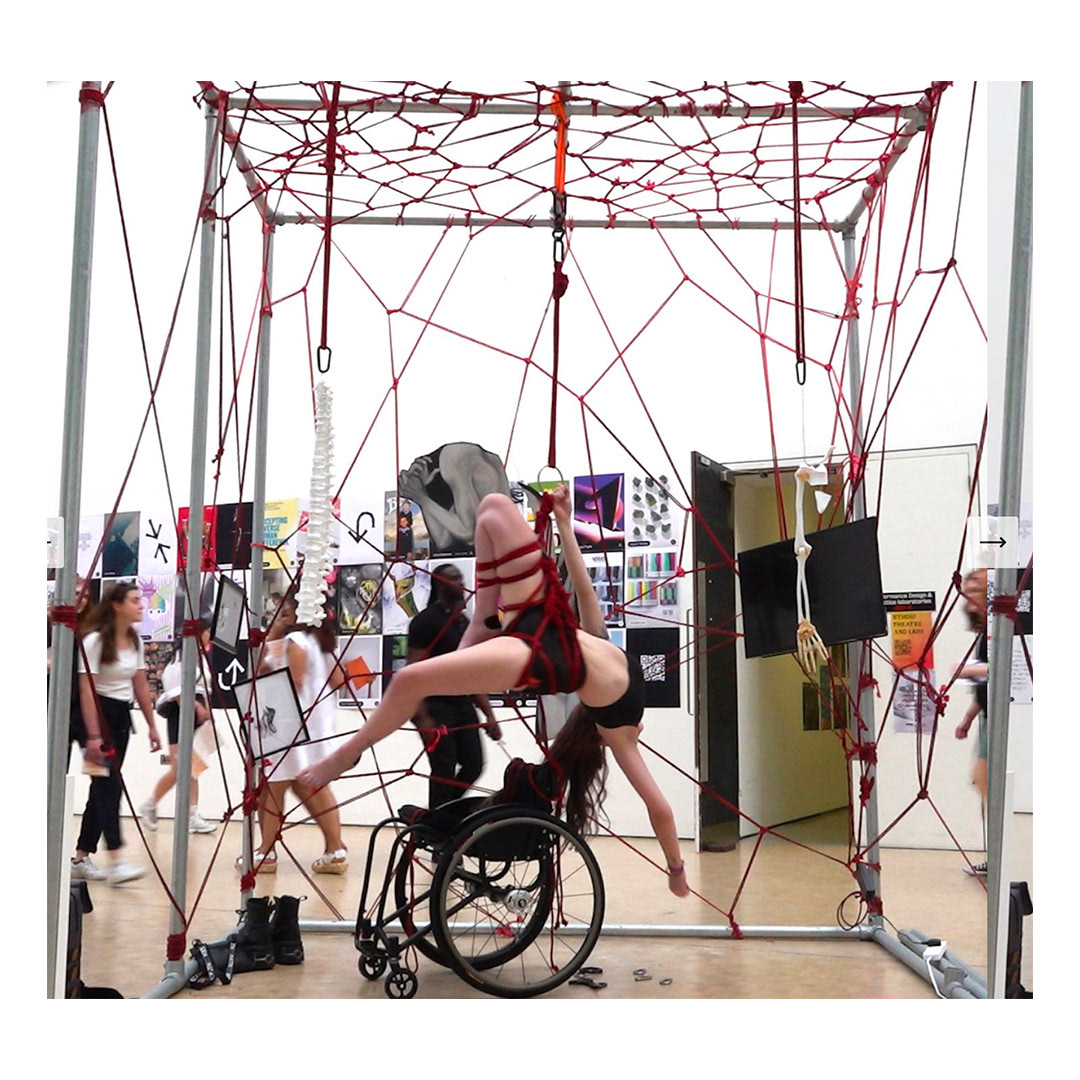
Soliloquy
Ken Turner - Solo Exhibition
Tension Fine Art, 135 Maple Rd, London SE20 8LP
First impressions on entering the gallery are of a body of work teetering on the edge of chaos. I am reminded of the far-too-familiar confusion of war-torn landscapes.
I am initially pulled into and around the gallery by the rhythm of the arrangement of work on the walls: canvas overlaps paper, paper overlaps printed media, and printed media becomes wall. The effect generated is a strong beat around the periphery of the space…viewing the work in this way seems almost processional.
There is a range of media and processes on show, each connected through the use of intuitive mark-making. Primary colours and expressive gestural marks generate a vivid sense of an intense and energetic performance. While contingent on the materials used, human agency is conspicuous: deliberation and surrendered impulse in equal measure. Characteristic of these works too is a desire to disregard the typical expectations of framing. Each work appears to be escaping its own form or framing device in some way: fragments of found and discarded ephemera seep from the edges of their box frames and multiples of 3D dogs appear to be digging their way out of the gallery space. I enjoy how these tactics remind me of the skin and fabric of the building and how quickly this points to the outside world beyond the gallery. This defiance is a joy to encounter.
The title of this show, ’Soliloquy’ leans into the viewer to invite understanding. Together with the unravelling and revealing nature of the artist's talk (Ken Turner interviewed by John Bunker on 9 July 2022), it seems clear that this work might be better understood as an internal landscape. The work in Soliloquy presents as controlled defiance. It seeks to defy the frame in which it is presented but holds itself carefully within the familiarity of the language of art as we understand it.
Ken Turner
https://www.kenturnerart.co.uk////corner.proof.riders
General Practice, 25 Clasketgate, Lincoln, UK (October - November 2020_
General Practice [gP] is an artist-led, experimental project space in Lincoln. Driven by collaborative activity it seeks to promote exchange with wider artist-led initiatives, stimulate critical discourse and through its programme of exhibitions, events and workshops sustain an engaged visual arts culture in the city.
In this show, three of the collective’s artists, Andrew Bracey, Kate Buckley and Nick Simpson exhibit work (and ongoing work in their studios) that has evolved as a consequence of their need to adapt to new priorities, unfamiliar routines and the limitations of space and resources resulting from lockdown.
Entering General Practice is always a rich experience. A visitor is rewarded with snatched glimpses of hectic studio spaces on either side of the short corridor. Today, the viewer is also greeted with the surprise aroma of fresh plaster. This welcome inadvertently performs the role of ‘threshold’. Senses are alerted and curiosity and anticipation are generated.
Almost instantly, I find myself inside the project space itself and in contrast to the city outside and the visceral overload of the adjacent studios, its gentle, diffused light and seductive palette produce a strong sense of having entered an inner sanctum.
Andrew Bracey, ‘Qui Vive (The Mocking of Christ)’ (detail), Watercolour on plaster, 2020
Consisting of three works in total, my eyes are drawn first to Bracey’s floor-to-ceiling plaster and watercolour work. This fills the end wall of the gallery space completely. Its larger-than-life scale and grand sweeping gestural marks (necessary to plaster a wall) together with the mesmerising gestalt effect of its incidental surface, radiates an aura of otherworldliness. Adding to this, and as if laying on top of the shimmering surface, brightly coloured painted lines begin to describe an image. Although fragmented and with only the sketchiest of references included, my brain skilfully strives to complete this painting – archway, steps, one-point perspective, draped fabric, a hand, a halo…this work unquestionably points to Florence and the 15th century. Fra Angelico’s expressions of devotion are embedded in this image and process. This encounter is both familiar and mysterious.
On either side of Bracey’s work and counterpoint to it and each other, are the composite works of Buckley and Simpson.
Simpson’s work consists of four horizontal shelves each with 17 polaroid photographs meticulously propped-up to form a regimented grid-like pattern. Overall, the piece gives the impression of a lyrical study of nature: a closely observed appreciation of its beauty. With closer attention, however, other forces and processes become apparent. Wilfully enigmatic images sit alongside familiar shots. Given equal significance, these quietly disrupt the well-ordered calm of the familiar park motifs and gently acknowledge the connection between the contingencies inherent in the polaroid process and our everyday lives.
Simpson has displayed an ongoing and changing record of his time during lockdown. The familiar is viewed through his sustained watchful attention and we are reminded of lockdown’s silence and drawn-out uncertainty. Despite the absence of the figure in these photographs, the sense of human presence is palpable.
Kate Buckley, ‘Ongoing Nowhere’ (detail), Giclee print on Hahnemühle German Etching paper, oak chair slat, wool felt, 2020
Consisting of three wall-mounted assemblages using found imagery, objects and materials as well as two suspended, spherical-shaped, soft intestine-like sculptures, Buckley’s work is also very much about what is unrevealed.
The three 2-dimensional images depicting a male nude bent fully forward from the waist draw me in first. Confined by the space that they exist in, their uncomfortable and concentrated position appears enduring. Control and resistance are required for this to be maintained. Looking at these figures, I find myself holding my breath and speculating on the nature of the unknown force responsible for their conditions. I wonder if the figure is complicit in their submission or whether they have been compelled, defenceless or oblivious, by forces beyond their power.
Buckley’s images are held uneasily in place, displayed on sloping lines of shelving which are themselves insecurely propped on strips of soft material. Able to partially resist the pull of gravity the soft material lines curve and dip towards the gallery floor creating the impression that the work is slowly slipping. Implied movement and the invisible lines extending from this display mechanism bind all elements of Buckley’s piece together and connect them to the building and to the other work on show.
As with Simpson’s shelving, Buckley’s display mechanisms perform as objects operating to influence attention levels and psychophysiological responses. I am aware that the act of looking has become a process of seeing.
Each piece, independent in its uniqueness, works in synchronicity with the others. They are interconnected by the very structure and fabric of the building and unified through their softly spoken ephemerality and a reverential tenderness toward the materials, time and the processes involved in their making.
The repetitive act of paying attention, crucial to our understanding of this show and embodied in each work is also expressed in my own repeated actions of moving back and forth, looking and re-looking, in the gallery. I am connected too. What is revealed has been shaped by a shared experience which manifests as a profound sense of time and place and inextricable connections in the broadest sense.
Ekphrasis
In Search of an Encounter with Beauty (1993)
Olafur Eliasson's 'Beauty', 1993 viewed at his retrospective at the Tate Modern, London 2019
Beauty is a large-scale, multi-media installation of mist and light assembled using a punctured hose pipe, nozzles, water, a bright spotlight and a darkened space.
An almost familiar sound of water draws me across the large gallery and into the mystery of the dark space of Beauty. Before I reach the entrance, I am aware that associations have been triggered. This is an instant, unspoken and biological process: memories smells and moments returning without conscious effort. Somatic feelings of past times becoming present. The experience is filmic, of time travel; a bridge to elsewhere and whens.
Sound is this work's threshold. Invitational rather than instructional and generating curiosity effortlessly. The dark interior is also intriguing – engineered to reveal its contents slowly. The effect of uncertainty produced adds to the urge to enter and the entirely biological responses of anticipation are recognised.
Beauty is a simple concept with a delightful and spectacular effect– this is beauty. Successful in terms of its engagement, it generates an instant inclusive, memorable connection – spectators stop in their tracks captivated, their journey around the exhibition halted.
I loved this installation’s grand narratives of water, light, space, time, and humans with their biological responses and symbiotic relationships. I enjoyed the physical sense of the misty moisture not quite landing on my skin, the shimmering slippery wet rainbow light and the gentle meditative soft 'sh' of the not-quite-visible water. Eliasson wants us to be present, fully aware and in real life. He has engineered an active tactile and embodied experience and each time we move our perspective changes. What you see depends on where you stand.
This work heightens our perceptual awareness transporting us out of our day-to-day into a collective appreciation. This feels like an ancient pre-human AND a collective Post-human moment. This encounter is more than a festival anthem.
Antonio Damasio, neuroscientist, psychologist and philosopher explains that the brain and the body work together to generate consciousness of the self within one’s surroundings. Far from being empty responses, the process of feeling influences higher-order thought processes such as decision-making, and behaviour and they are the driving forces behind human achievement and culture. I can see that Eliasson and his team have made strategic use of the natural and man-made elements along with this knowledge and understanding. His intention to join nature with human sensory physiology has been successful.
Returning to memories of this encounter again and again new insights emerge. The collective relationship with strangers around me, albeit fleeting, had been unexpected. I imagined that the boundaries between us had softened and that we were becoming mutually linked: our sensibilities and those of the work, mixed in our shared space and time. Felix Guatarri would claim in his Aesthetics of Becoming, that the nature of subjectivity is fluid and that our individual subjectivities had shifted under these circumstances.
This didn't seem like collective agency however and I am still not able to articulate quite what our connected experience was – a metaphysical moment?
In Search of an Encounter with x-ray machine (2016)
Roger Hiorn’s x-ray machine, 2016 in the exhibition 'Now' at MOMA, Edinburgh, 2019
'X-ray machine' 2016, is an X-ray machine lying on the floor on its side, in the gallery.
There was no clever engineering here and during the whole afternoon I spent in the room with this work, and this a national gallery in a capital city at the height of an international Arts festival, only one other spectator took more than 6 seconds to look at this artwork. Typically, spectators didn’t (or couldn't) even cross the doorway threshold to enter the gallery space.
Instantly I am under pressure: western values; geopolitical significance; digital garbage; and human suffering elsewhere; today's ‘out-of-OUR-control’ civilisation - profit-driven and algorithmically governed; homogenising. Accelerating advanced capitalism is an alienating and dehumanising experience.
This is a stark encounter - but it instantly shifts the physical and intellectual response from the everyday. The audience is thoroughly alienated. This is so successful that the overwhelming majority of them can’t even make it into the room!
The materiality of the work consists of things already in the world - this industrial man-made has already happened. There is implied violence in the positioning of the work and the unclean, worn state of this heavy immobile immovable object. Is it obsolete? Is this a painful post-industrial dismantling? Has it fallen? Knocked over? Has it been gratuitously vandalised? Or, simply neglected.
This is how we currently live, this object is saying - our Western neoliberal values are manifested here.
Hiorns has put us in the position of having to accept the object as it is. His authority in this, gained and validated by the museum, gives the object its power to communicate the values that it represents. I am quickly self-aware that I bring my own lived experience psychology and drama to this event. We live amongst these objects – once a symbol of a previous achievement of engineering – a co-evolution of language and technology. Some of us live because of them. They have power and authority in our lives.
This object represents a real moment and recognition of today’s behaviours. We were here – Have we de-camped? – or just disappeared? The idea of the future and the present co-existing at the same time comes through very clearly in this way.
By layering significance, Hiorns has created work which bridges time zones and generates new thinking and imagining effectively. In looking for meaning my questioning of our future is unmistakeable.
It would have been fascinating to observe this work and its audience with the addition of 'Nude Young Man'. How active everything would have become then. Our understanding of humans as ‘raw material’ is not new – capitalism invests in the knowledge and control of all life forms for profit - our presumed human supremacy is dismantled and displaced. The work embodies today's predicament.
Hiorns states that he is resisting the art world’s and art audiences’ expectations and values although I wonder how honest he is being with himself. As it stands, the successfulness of Hiorns intent to convey the alienation of our culture and lives is so effective that I am the only spectator to have paid any attention to this work today but the use of nude young men as material in the work seems to be just the type of spectacle that today’s art audience might expect.
Hiorns asks: how do we use meaning to allow us to have a more sophisticated and truthful relationship with the world? That’s such a great question.
My encounter with Hiorns’ powerful reified object was surprisingly more effective than I had thought it might be. The sense of real life is intense…and, as such X-ray machine, is excruciatingly successful. In this encounter, I am alert. I am consciously present THEN, and now in my memory of then, and in my concern for our future, I am thinking and imagining differently.